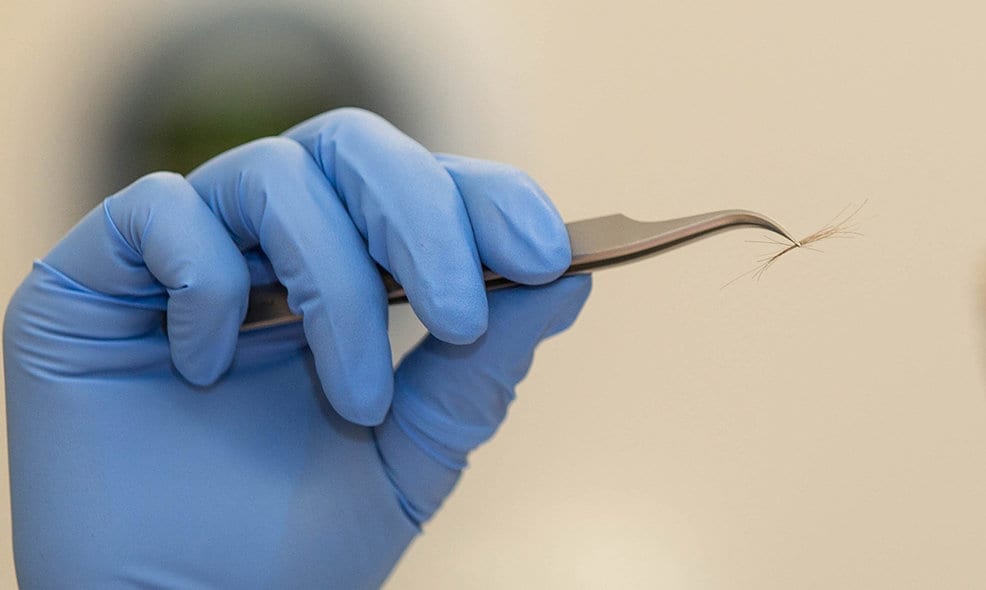
Bacteria living on the skin of frogs could save them from a deadly virus, new research suggests.
Ranavirus kills large numbers of European common frogs – the species most often seen in UK ponds – and is one of many threats facing amphibians worldwide.
Scientists from the University of Exeter and ZSL’s Institute of Zoology compared the bacteria living on frogs – known as their “microbiome” – from groups with varying history of ranavirus.
They found that populations with a history of outbreaks had a “distinct” skin microbiome when compared to those where no outbreaks had occurred.
“Whether a population of frogs becomes diseased might depend on the species of bacteria living on their skin,” said Dr Lewis Campbell.
“Ranavirus is widespread, but its presence in the environment doesn’t necessarily mean frogs become diseased – there appears to be some other factor that determines this.
“The skin is often the first infection point in ranavirus, and the first stage of the disease can be skin sores.
“It’s possible that the structure of a frog’s microbiome – the mix of bacteria on its skin – can inhibit the growth and spread of the virus so it can’t reach a level that causes disease.
“While the results of our study demonstrate a clear link between the frog skin microbiome and disease, further research will be need to understand the exact mechanisms which cause this relationship to form.”
Laboratory trials will help establish whether a history of ranavirus infection causes the microbiome differences, or whether these are pre-existing differences that predispose some populations to infection.
The scientists tested the skin bacteria of more than 200 wild adult European common frogs (Rana temporaria) from ten populations.
They found that the microbiome of individual frogs is usually most similar to that of others in the same population (those living in the same geographical area), but that populations with the same disease history were more similar to each other than to populations of the opposite disease history.
Even though amphibians can partially “curate” their microbiome by producing proteins that benefit specific bacteria, they are limited to those bacteria which are available in their environment.
Ranavirus can wipe out entire common frog populations and, though the new findings need further investigation, the researchers hope their work could help the species.
Dr Xavier Harrison said: “There’s growing evidence that skin bacteria may protect amphibians from lethal pathogens such as chytrid fungus, and that we can develop cocktails of probiotic bacteria to prevent vulnerable individuals from contracting disease.
“Our work suggests that given enough effort and research, similar probiotic therapies may be effective against ranavirus.”
Learn more: Skin bacteria could save frogs from virus
The Latest on: Frogs
[google_news title=”” keyword=”frogs ” num_posts=”10″ blurb_length=”0″ show_thumb=”left”]
via Google News
The Latest on: Frogs
- Wood frogs achieved significant biological evolution in just 25 yearson April 26, 2024 at 11:34 am
Wood frogs underwent a rapid evolution to tolerate high levels of road salt. This offers hope for survival amidst increasing challenges.
- 'Mad as a box of frogs' - Luke Williams' verdict on out-of-contract Swansea City stars' futureson April 26, 2024 at 6:08 am
The forward offered everyone a timely reminder of his talents in the 4-0 thumping of Huddersfield Town last time out, curling in a tremendous 25-yard strike that even had some Terriers fans in awe.
- Festivals honor raccoons, frogs, banana slugs and more | ECOVIEWSon April 26, 2024 at 1:45 am
When people celebrate an event by naming it after a native animal (even a slug), they develop an awareness of the species.
- Wiley, Coleman Headline 8 TCU Horned Frogs In 2024 NFL Drafton April 25, 2024 at 12:43 pm
NFL Draft begins Thursday night. Which TCU Horned Frogs can you expect to hear their name called this weekend?
- Who's singing in the woods? If you're near a vernal pool, you're most likely hearing the songs of spring frogson April 25, 2024 at 7:05 am
But then, I mentioned the idea that different frogs also sing different songs and that produced blank stares and puzzled looks. One student even asked, “Don’t frogs just say ribbit?” After a slight ...
- Wood Frogs Have Evolved Tolerance to Road Salton April 24, 2024 at 5:00 pm
We’re beginning to learn that when salt drains into fresh water, it can kill animals, stunt the growth of fish, cause sex changes in frogs, and make animals more prone to diseases.” “Amphibians like ...
- Endangered frogs featured on new Canada Post stampson April 24, 2024 at 12:04 pm
Canada Post has released a new stamp series that raises awareness about two of the country’s endangered frog species. The Oregon spotted frog and Fowler’s toad, featured on the stamp, are both on ...
- Fossil frogs share their skincare secretson April 23, 2024 at 2:55 pm
Palaeontologists have solved a hundred-year-old mystery of how some fossil frogs preserve their fleshy parts -- it's all down to their skin. Palaeontologists studied 45-million-year-old fossil frogs ...
- Speaking of Nature: ‘Those sound like chickens’: Wood frogs and spring peepers are back — and loud as everon April 23, 2024 at 9:44 am
During a recent lecture on evolutioin I had to explain the differences between three different processes known as geographic, temporal and behavioral isolation. Geographic isolation is the easiest of ...
- The kissable frogs and sparky combat of Hades 2 looks set to bewitch fanson April 23, 2024 at 6:41 am
The pacy dash 'n' slash of Zagreus seems alive and well in Hades 2, the hotly anticipated godkilling roguelike from Supergiant Games.
via Bing News










